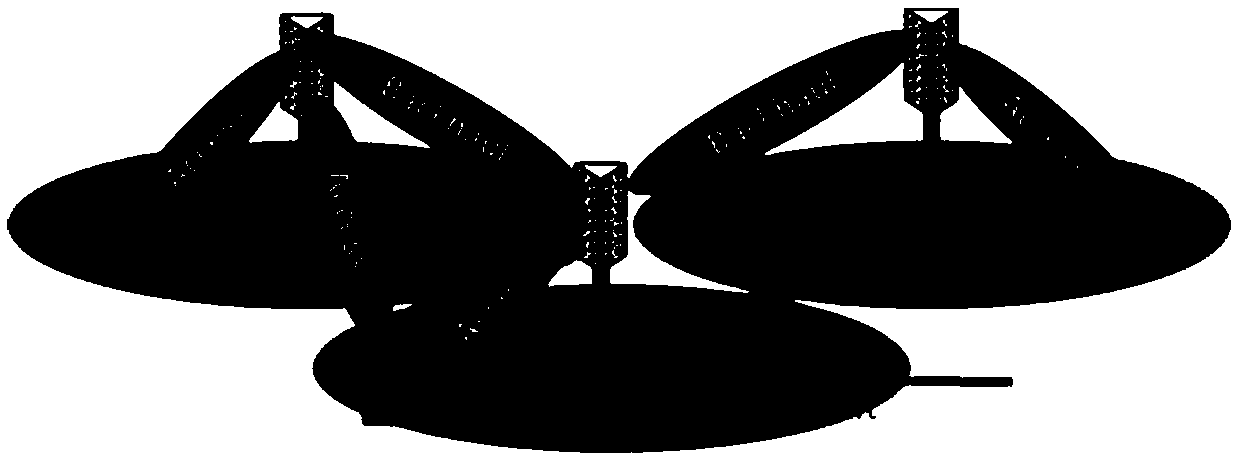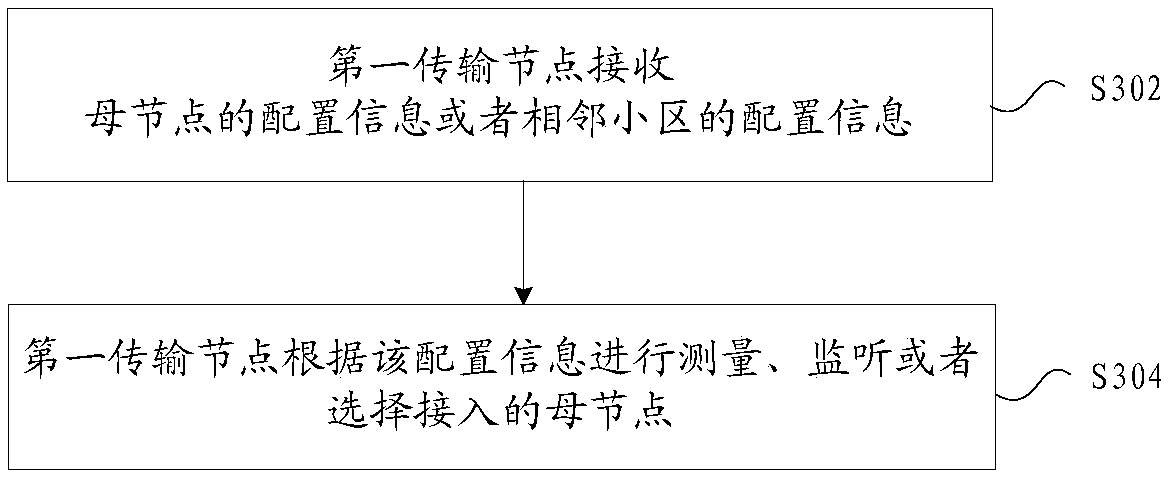Access selection method and device
A technology for access selection and configuration information, applied in the field of communication, can solve the problems of large communication delay and overhead, no IAB selection method, etc., and achieve the effect of reducing communication delay and overhead
- Summary
- Abstract
- Description
- Claims
- Application Information
AI Technical Summary
Problems solved by technology
Method used
Image
Examples
Embodiment 1
[0025] In this embodiment, a method for operating in access selection is provided, image 3 is a flowchart of an access selection method according to an embodiment of the present invention, such as image 3 As shown, the process includes the following steps:
[0026] Step S302, the first transmission node receives the configuration information of the parent node or the configuration information of the adjacent cell;
[0027] Optionally, the above configuration information includes at least one of the following: cell priority information, cell level information used to indicate the number of hops to the integrated access backhaul donor IAB donor, system information, resource configuration information, cell access information, cell Selection information, IAB donor information, and IAB information; wherein, the IAB donor includes an IAB base station or an IAB donor distributed unit DU; the IAB donor information or IAB information includes at least one of the following: connectio...
example 1
[0067] IAB carries the IAB level identifier in MIB / SIB, if it is an IAB Donor, the level is 0.
[0068] Then the UE can know the level of the IAB after reading the system information.
[0069] Or, the MIB / SIB does not include the level information of the cell, but includes the cell priority information. Generally speaking, the higher the level, the higher the priority of the cell, but there is not a one-to-one correspondence between the two. Hierarchy information, current load or capacity, the priority information of each cell is determined by itself or the IAB donor.
[0070] Therefore, the UE selects a cell in the following ways:
[0071] In step S81, the UE searches for the cell with the strongest signal on each frequency point, reads SIB information, and obtains IAB level information or cell priority information, PLMN information, etc.
[0072]Step S82, the UE finds a suitable cell satisfying the s criterion according to the measurement result;
[0073] In step S83, the...
example 2
[0075] In addition to carrying the IAB level or cell priority information identifier in the MIB / SIB, if the IAB receives the level or cell priority information of other surrounding IABs, it can also broadcast it through the system information in the form of a neighbor cell level list, and the UE After receiving the information, it can be saved locally. The advantage of doing this is that the UE does not need to read the system information of each cell sequentially to receive the layer information or cell priority information, which reduces the time delay of cell selection.
[0076] Therefore, the UE selects a cell in the following ways:
[0077] Step S91, the UE searches for the cell with the strongest signal on each frequency point, reads the SIB information, and obtains the level or cell priority information of the IAB and adjacent IAB cells;
[0078] Step S92, after learning the cell with the highest IAB level or cell priority information, detect it, select the cell with t...
PUM
 Login to View More
Login to View More Abstract
Description
Claims
Application Information
 Login to View More
Login to View More - R&D
- Intellectual Property
- Life Sciences
- Materials
- Tech Scout
- Unparalleled Data Quality
- Higher Quality Content
- 60% Fewer Hallucinations
Browse by: Latest US Patents, China's latest patents, Technical Efficacy Thesaurus, Application Domain, Technology Topic, Popular Technical Reports.
© 2025 PatSnap. All rights reserved.Legal|Privacy policy|Modern Slavery Act Transparency Statement|Sitemap|About US| Contact US: help@patsnap.com



